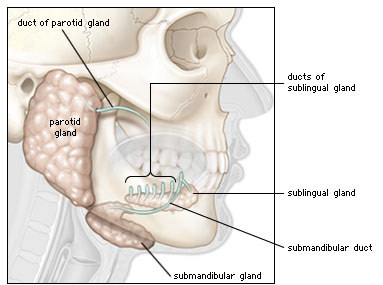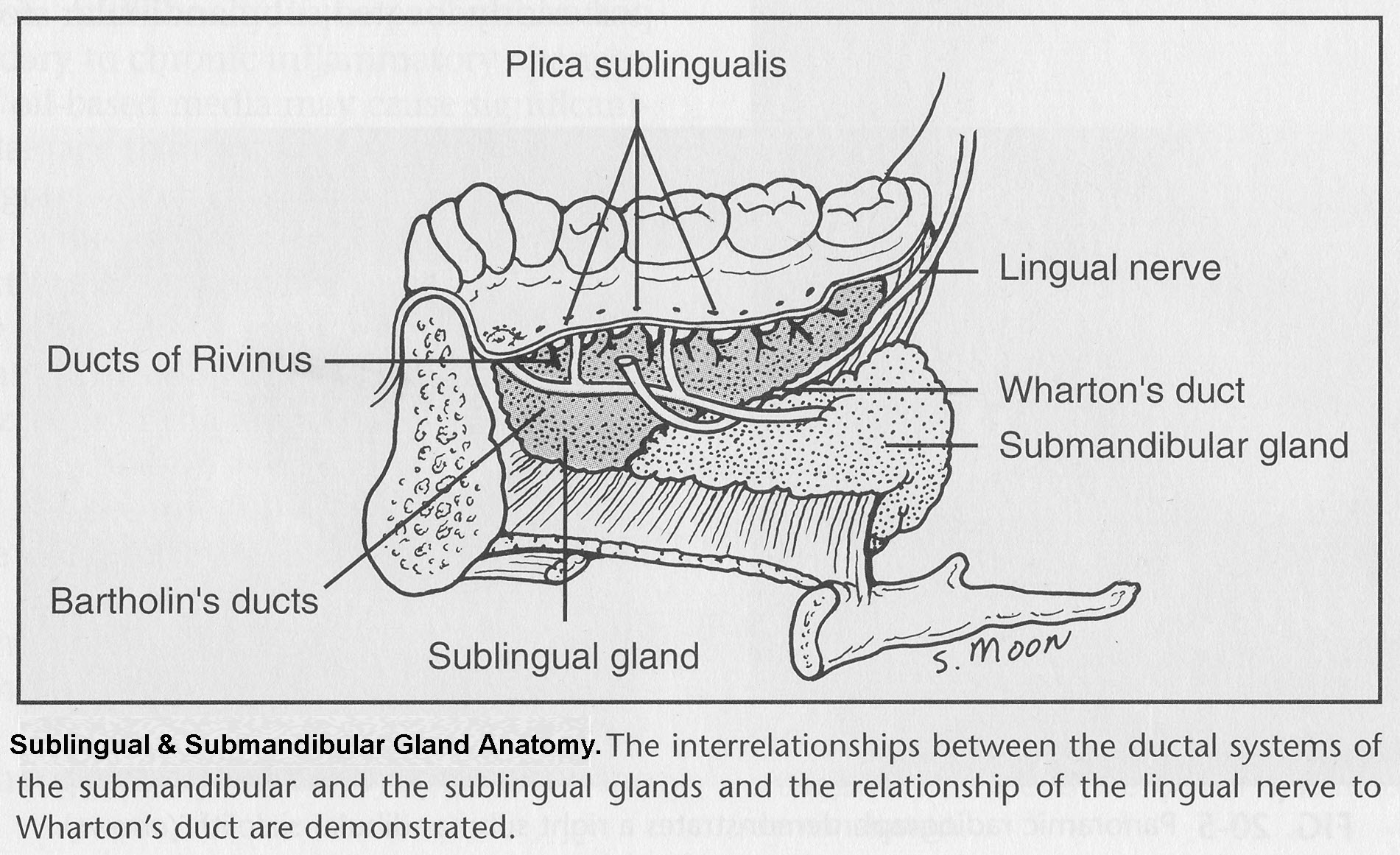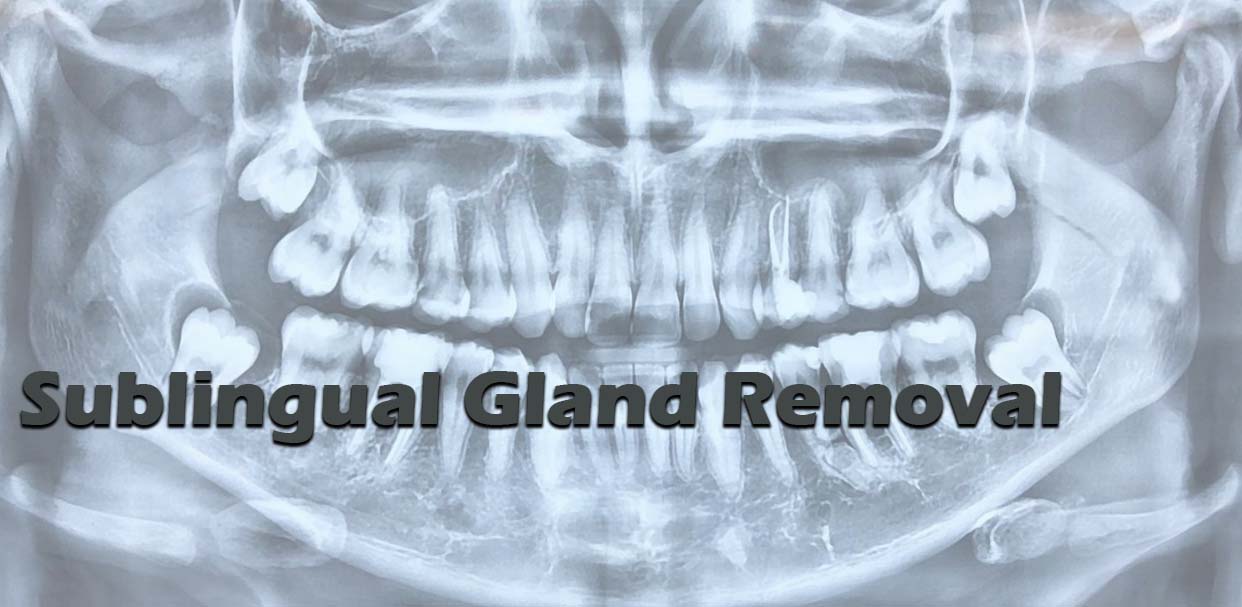What is the Sublingual Gland?
The Sublingual Gland is a salivary gland about the size of an almond that lies underneath the tongue in the floor of your mouth.
Saliva drains from it through a number of small tubes that open on the inside of the mouth underneath the tongue.
The most common reason for removing a Sublingual Gland is as a result of a blockage to these drainage tubes. This can lead to a swelling of the floor of the mouth (ranula).

What does the operation involve?
The Sublingual Gland is removed under a general an?sthesia. A cut around 2cm long underneath the tongue on the inside of the lower teeth. Once the gland has been removed the incision is held together again with stitches. These are usually dissolvable but may take several weeks to disappear.

How long will the operation take?
The length of time partly depends upon the degree of difficulty. In an uncomplicated procedure it will take approximately 30 minutes to remove the Sublingual Gland.
What can I expect after the operation?
You usually need a night in hospital following the surgery. It is unlikely to be very sore but regular painkillers will be provided for you. There is relatively little swelling following Sublingual Gland removal.
The removal of one Sublingual Gland will not have an impact on the amount of saliva that you produce. There are many other salivary glands left in and around the mouth that will still keep it moist.
Do I need any time off work?
It is usually advisable to take 1 week off from work to recover from the surgery. During this time, you should avoid strenuous activity.
Is there anything that I need to do when I get home?
It is important to keep the wound dry for the first week following surgery. It is important to remember that you will not be able to drive or operate machinery for 48 hours after your general an?sthetic.
Will I have a scar?
At the time of surgery, the wound is only gently held together with a few stitches, so initially you will see some gaps. Please do not be concerned by this. All cuts leave a scar but inside the mouth, the majority of these fade with time and are difficult to see when they are fully healed. It will take a couple of months for your scar to fade completely.
What are the possible problems?
The medico-legal landscape of consent has been shaped by a number of cases, such as Chester v Afshar [2004], Montgomery v Lanarkshire Health Board [2015], Duce v Worcestershire Acute Hospitals NHS Trust [2018] amongst others, so that it is more patient-centred.
Many of the legal claims in surgical (& medical) cases occur as a result of “failure to warn”, i.e. lack of adequately documented and appropriate consent.
A pre-requisite for obtaining consent for a surgical (medical / dental) procedure from a patient, is a full exchange of information regarding any risks, drawbacks and limitations of the proposed treatment and any alternatives to it (even non-treatment).
The clinicians should provide the patient with as much information as is appropriate and relevant, that it should be in terms the patient understands & the risks should be personalised for that individual patient.
Also, there should be enough time for the patient to understand the information given and get a second opinion if needs be.
The following list of warnings regarding Sublingual Gland excision is neither exhaustive nor is it predictive.
The most pertinent warnings have been included here.
- Infections.
Infection is uncommon but can happen if the Sublingual Gland was badly infected. Wound infection will require antibiotic treatment. Pus collected under the skin may need to be drained.
- Bleeding.
Bleeding is unlikely to be a problem but can occur from the blood vessels supplying the tongue (lingual and sub-lingual vasculature). If it occurs, it usually does so within the first 12 hours of surgery which is why you need to stay in hospital overnight.
- Haematoma.
A blood clot can collect beneath the skin (haematoma). This occurs in about 5% of patients and it is sometimes necessary to return to the operating theatre and remove the clot and replace the drain.
- Numbness of Tongue.
The Lingual Nerve, which gives sensation and taste to one half of the tongue, runs close to the duct of the gland. It very rarely gets injured.
However, if the Lingual Nerve is damaged, your tongue may feel numb immediately after the operation. This numbness may take several months to disappear and in a minority of patients may be permanent.
- Restricted Tongue Movement.
The Hypoglossal Nerve [link to Hypoglossal Nerve Damage] is only very rarely bruised. It is a nerve that makes the tongue move. If it were to occur, it is unlikely to produce any noticeable disability.
- Submandibular Duct Damage.
The Submandibular Duct is the tube that carries saliva from the Submandibular Gland into the mouth. The Submandibular Gland is a salivary gland, about the size of a plum, that lies immediately below the lower jaw at the top of the neck.

- The duct runs close to the Sublingual Gland before opening on the inside of the mouth under the tongue immediately behind the lower front teeth.
If this duct is damaged, saliva may not drain properly from the Submandibular Gland and the gland may therefore swell in the upper part of the neck. The majority of these swellings settle down on their own.




 Ask Prof. Hegab
Ask Prof. Hegab +201004401598
+201004401598

